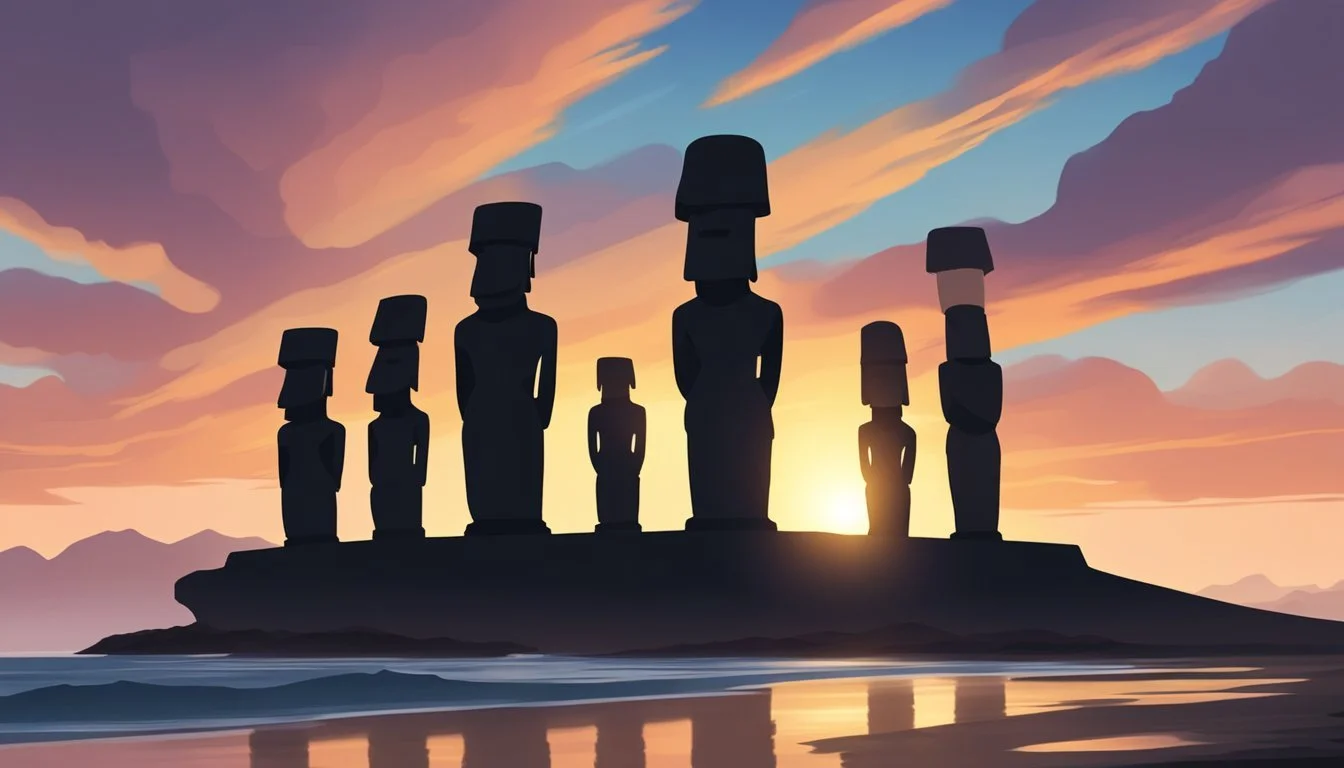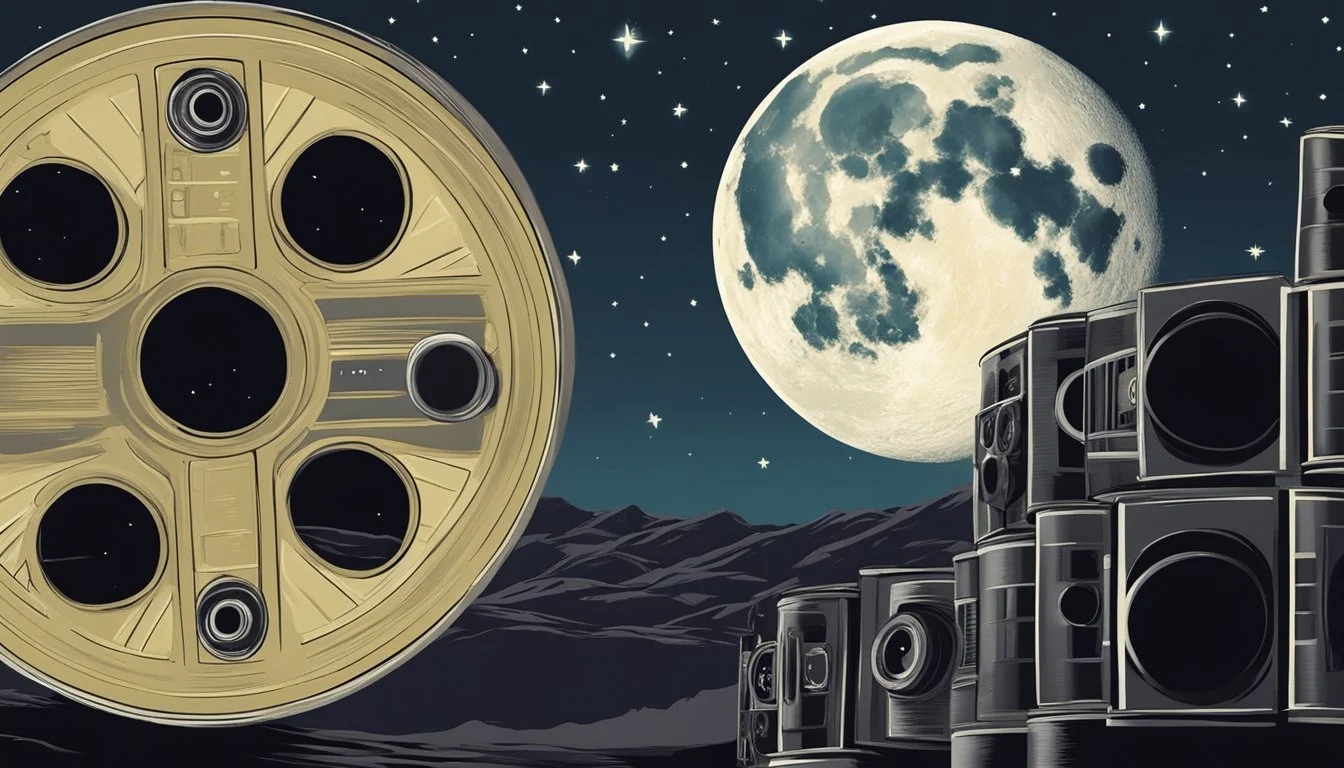Top Documentaries of 1953
Groundbreaking Films That Shaped Cinema
The year 1953 marked a significant period in documentary filmmaking. As the medium continued to evolve, filmmakers explored new techniques and subjects, capturing the essence of a rapidly changing world. Documentaries from this era provide a unique window into the social, cultural, and political landscape of the mid-20th century.
Several standout documentaries from 1953 continue to be recognized for their artistic merit and historical significance. These films cover a wide range of topics, from urban life to nature, and showcase the diverse approaches taken by documentarians of the time. Their enduring impact demonstrates the power of non-fiction storytelling to inform, inspire, and provoke thought long after their initial release.
1) The Living Desert (1953)
The Living Desert was a groundbreaking nature documentary that captivated audiences in 1953. Directed by James Algar and produced by Walt Disney, it offered an unprecedented glimpse into the hidden world of desert ecosystems.
The film showcased the diverse flora and fauna of the American Southwest, revealing the intricate relationships between plants, animals, and their harsh environment. Its innovative cinematography brought microscopic creatures and rarely seen behaviors to the big screen.
Narrated by Winston Hibler, The Living Desert combined educational content with entertaining storytelling. It featured memorable sequences such as a battle between a tarantula and a wasp, and the courtship dance of scorpions.
The documentary's success led to critical acclaim and commercial popularity. It won the Academy Award for Best Documentary Feature, marking a significant achievement for Disney's True-Life Adventures series.
The Living Desert's impact extended beyond entertainment, inspiring a new generation of nature filmmakers and conservationists. It remains a landmark in wildlife documentary filmmaking, demonstrating the power of cinema to reveal the wonders of the natural world.
More information on The Living Desert
2) Eager for Glory
"Eager for Glory" (1953) is a gripping documentary that explores the life and military campaigns of Drusus the Elder, a Roman commander who played a crucial role in expanding the empire's northern frontiers.
The film provides a detailed account of Drusus's expeditions into Germania, highlighting his strategic brilliance and leadership skills. It utilizes historical reenactments and expert commentary to bring this often-overlooked figure to life.
Viewers gain insight into Drusus's relationship with Emperor Augustus and his significance in Roman politics. The documentary also examines the lasting impact of his conquests on the empire's boundaries and military tactics.
Through careful research and compelling storytelling, "Eager for Glory" sheds light on a lesser-known chapter of Roman history. It offers a balanced perspective on Drusus's achievements and their historical context.
More information on Drusus the Elder
3) A Queen Is Crowned (1953)
"A Queen Is Crowned" documents the coronation of Queen Elizabeth II in 1953. The film captures the grandeur and pageantry of this historic event, offering viewers a front-row seat to the ceremony.
Directed by Michael Waldman, the documentary features narration by acclaimed actor Laurence Olivier. His voice guides the audience through the intricate rituals and traditions of the coronation.
The film showcases the meticulous preparations and the actual coronation ceremony in vibrant Technicolor. It provides a detailed look at the regalia, processions, and crowds that gathered to witness this momentous occasion.
"A Queen Is Crowned" received critical acclaim and garnered several award nominations. It was nominated for an Academy Award for Best Documentary Feature and won the first Golden Globe Award for Best Documentary Film.
Christopher Fry, a renowned playwright, penned the script for the documentary. His writing, combined with Olivier's narration, adds depth and context to the visual spectacle.
The film serves as both a historical record and a cinematic achievement. It preserves a pivotal moment in British history while demonstrating the power of documentary filmmaking.
More information on "A Queen Is Crowned"
4) The Conquest of Everest (1953)
"The Conquest of Everest" documents the historic first successful ascent of Mount Everest in 1953. Directed by George Lowe, this British Technicolor film provides a captivating account of the expedition led by John Hunt.
The documentary showcases the meticulous preparations and challenges faced by the team. It features footage of equipment testing and acclimatization efforts, giving viewers insight into the expedition's complexities.
Edmund Hillary and Tenzing Norgay's groundbreaking achievement is central to the film. Their successful summit on May 29, 1953, marked a pivotal moment in mountaineering history.
Cameraman Tom Stobart, who participated in the expedition, captured stunning visuals of the Himalayan landscape. The film's cinematography brings the harsh beauty of Everest to life for audiences.
"The Conquest of Everest" received critical acclaim, earning a nomination for Best Documentary Feature at the Academy Awards. It remains a significant record of human perseverance and triumph over nature's most formidable challenges.
Learn more about "The Conquest of Everest" on IMDb
5) A King Remembers
"A King Remembers" (1953) is a notable documentary that offers a unique perspective on royal life. The film features King Gustaf VI Adolf of Sweden sharing his personal memories and experiences.
Gustaf VI Adolf, who ascended to the throne in 1950, provides intimate insights into the Swedish monarchy. He reflects on his long life, which spanned from the late 19th century to the mid-20th century.
The documentary captures the king's thoughts on historical events he witnessed firsthand. It also explores his role as a constitutional monarch in a modern democracy.
Viewers gain a rare glimpse into the private world of royalty through Gustaf VI Adolf's candid recollections. The film serves as both a historical document and a personal memoir.
"A King Remembers" stands out among 1953 documentaries for its royal subject matter and intimate approach. It offers a valuable window into Swedish history and culture of the time.
More information on King Gustaf VI Adolf
6) Alan in Wonderland (1953)
Alan in Wonderland is a lesser-known documentary from 1953 directed by British filmmaker John Eldridge. The film explores the imaginative world of a young boy named Alan as he navigates his everyday surroundings.
Eldridge employs a unique blend of observational and poetic techniques to capture Alan's perspective. The camera follows the child as he transforms ordinary objects and scenes into fantastical adventures.
The documentary received praise for its innovative approach to depicting childhood imagination. Critics noted the film's ability to blur the lines between reality and fantasy, mirroring a child's fluid perception of the world.
Alan in Wonderland stands out among 1950s documentaries for its creative visual style and intimate portrayal of its young subject. The film offers viewers a glimpse into the rich inner life of a child.
While not widely seen upon initial release, the documentary has gained appreciation in subsequent years for its artistic merit and sensitive depiction of childhood.
More information on Alan in Wonderland
7) Easter Island Enigma
"Easter Island Enigma" (1953) explores the mysteries surrounding the colossal stone statues on Rapa Nui. The documentary examines theories about the creation and transportation of the moai.
Archaeologists and local experts discuss various hypotheses on how the ancient islanders carved and moved these massive figures. The film presents evidence from archaeological digs and analyzes traditional oral histories.
Viewers are taken on a journey through the island's rugged terrain, showcasing the quarries where the statues were carved. The documentary also touches on the ecological changes that occurred on Easter Island over centuries.
"Easter Island Enigma" provides insights into the possible religious and cultural significance of the moai to the Rapa Nui people. It examines the societal structure that may have enabled such monumental undertakings.
The film uses then-cutting-edge techniques to illustrate potential methods for moving the multi-ton statues. It also addresses the decline of the island's civilization and the impact of European contact.
More information on Easter Island
8) Operation Hurricane
Operation Hurricane (1953) documents the first British atomic bomb test. The film provides a behind-the-scenes look at the preparation and execution of this historic event.
Directed by Stuart Legg, the documentary captures the scientific and military efforts leading up to the detonation. It showcases the meticulous planning and security measures implemented for the test.
The film features footage of the explosion on October 3, 1952, in the Montebello Islands off Western Australia. Viewers witness the immense power of the 25-kiloton plutonium bomb as it vaporizes the HMS Plym.
Operation Hurricane emphasizes the technological achievement and positions Britain as the world's third nuclear power. The documentary balances factual reporting with dramatic cinematography to convey the gravity of the event.
While maintaining secrecy around sensitive information, the film offers a rare glimpse into this pivotal moment in British military history. It serves as a valuable historical record of the early atomic age.
More information on Operation Hurricane
9) The Moon is Blue: Exposed
"The Moon is Blue" (1953) stirred controversy upon its release due to its frank discussion of sexuality. Directed by Otto Preminger, this romantic comedy pushed boundaries in Hollywood's censorship era.
The film's plot revolves around a young woman who meets an architect atop the Empire State Building. Their encounter leads to a series of romantic entanglements and candid conversations about relationships.
What set "The Moon is Blue" apart was its use of then-taboo words like "virgin," "seduce," and "mistress." These terms, commonplace today, were considered scandalous in 1950s cinema.
The movie's content led to its denial of the Production Code seal of approval. It was even banned in several U.S. states and countries. This controversy, however, ultimately helped challenge and weaken the strict Hollywood Production Code.
Despite its provocative reputation, modern viewers might find "The Moon is Blue" relatively tame. Its significance lies more in its historical impact on film censorship than its actual content.
More information on The Moon is Blue
10) The Destiny of Base Ball (1953)
"The Destiny of Base Ball" is a lesser-known documentary from 1953 that explores the early history and development of America's pastime. The film focuses on the origins of baseball in the mid-19th century and its evolution into a professional sport.
Directed by Jack Daniels, the documentary features rare archival footage and interviews with baseball historians. It examines the contributions of key figures like Alexander Cartwright and Abner Doubleday to the game's foundations.
The film highlights significant milestones in baseball's history, including the formation of the National League in 1876 and the American League in 1901. It also touches on the impact of legendary players like Babe Ruth and Ty Cobb on the sport's popularity.
"The Destiny of Base Ball" provides valuable insights into how baseball became deeply ingrained in American culture. While not as widely recognized as some later baseball documentaries, it remains an important historical record of the sport's early days.
More information on baseball documentaries
Historical Context of Documentaries in 1953
1953 marked a pivotal year for documentary filmmaking, influenced by post-war cultural shifts and technological innovations. Documentaries played a crucial role in shaping public opinion and preserving historical events.
Cultural Influences Post-World War II
The aftermath of World War II significantly impacted documentary themes in 1953. Filmmakers focused on rebuilding efforts, social changes, and international relations. Many documentaries explored the emerging Cold War tensions and the global political landscape.
Coronation documentaries gained popularity, with Queen Elizabeth II's ceremony becoming a major subject. These films provided rare glimpses into royal traditions and national identity.
Social issues like urbanization, immigration, and changing family dynamics also featured prominently. Documentaries often portrayed the contrast between traditional values and modern lifestyles.
Technological Advancements in Filmmaking
1953 saw significant improvements in film technology, enhancing documentary production. Lighter, more portable cameras allowed filmmakers to capture real-life events with greater ease and spontaneity.
Color film became more accessible, though black and white remained common for its artistic appeal and lower cost. Improved sound recording equipment enabled better on-location audio capture.
Editing techniques evolved, allowing for more creative storytelling. Filmmakers experimented with narrative structures, combining interviews, archival footage, and reenactments.
Television's growing popularity influenced documentary style, with shorter formats gaining traction. This shift encouraged more concise storytelling and broader distribution of documentary content.
Prominent Filmmakers of 1953
Several directors made significant contributions to documentary filmmaking in 1953, pushing the boundaries of the genre. Their innovative techniques and unique storytelling approaches helped shape the documentary landscape of the era.
Innovative Storytelling Techniques
Laurence Olivier's narration in the documentary about Queen Elizabeth II's coronation brought a new level of gravitas to the genre. His eloquent delivery enhanced the visual storytelling, creating a more immersive experience for viewers.
Directors like Fred Zinnemann, though primarily known for fiction films, influenced documentary styles with their cinéma vérité approach. This technique emphasized naturalistic filming and minimal interference, allowing events to unfold organically on camera.
Some filmmakers experimented with combining dramatized sequences and archival footage, blurring the lines between fiction and non-fiction. This hybrid approach added depth to historical documentaries, making them more engaging for audiences.
Contribution to Documentary Genre
The success of the Queen Elizabeth II coronation documentary at the box office demonstrated the public's growing interest in real-life events captured on film. This commercial viability encouraged more investment in documentary production.
Filmmakers in 1953 tackled a wide range of subjects, from political events to social issues. Their work helped establish documentaries as a powerful medium for education and social commentary.
Technical advancements in portable cameras and sound recording equipment allowed directors to capture more spontaneous moments. This led to a shift towards more observational documentary styles, moving away from heavily scripted narratives.
Documentarians of 1953 also focused on preserving cultural heritage, recording traditional practices and ways of life that were rapidly changing in the post-war era.









